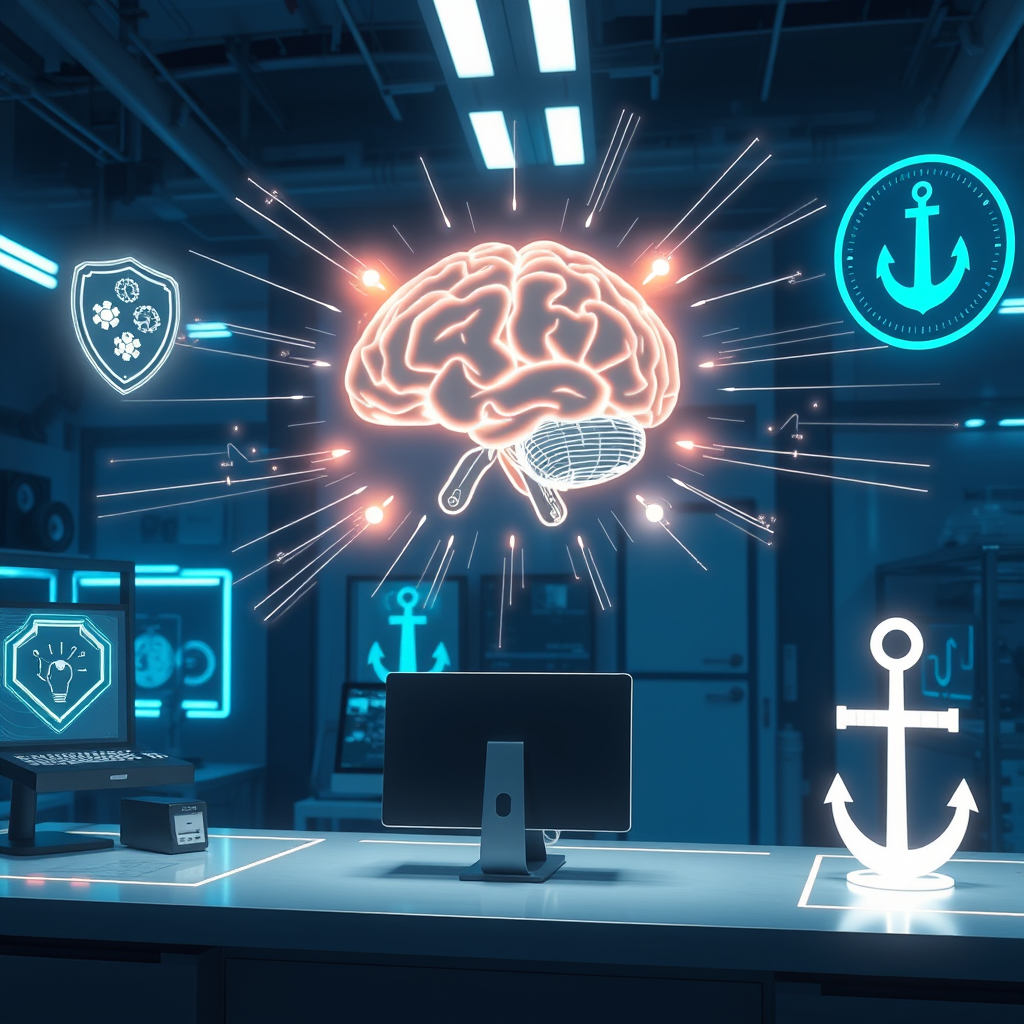
Introduction
The world of generative AI is moving at a breakneck pace, and the tools that enable developers to turn ideas into fully‑functional agents are evolving in tandem. In the last year, Google Cloud’s Vertex AI Agent Builder emerged as a no‑code, low‑code platform that promised to make it easier for enterprises to prototype, test, and deploy AI agents without having to wrestle with the underlying infrastructure. Now, with a new suite of features announced at the company’s Cloud Next event, Agent Builder is stepping up its game in three critical areas: speed of development, depth of governance, and integration with orchestration frameworks.
At its core, an AI agent is a software entity that can perceive its environment, reason about goals, and take actions—often by calling external APIs or invoking other tools. For businesses, the promise is huge: from automating customer support to orchestrating complex supply‑chain workflows. But the promise also comes with risk. An agent that misbehaves, leaks data, or fails to meet performance targets can quickly erode trust. Google’s latest updates aim to address both sides of the equation by tightening control over how agents are built and monitored while simultaneously making the build process faster and more intuitive.
This post dives into the specifics of the new Agent Builder capabilities, explores how they fit into the broader ecosystem of agent‑building platforms, and offers practical guidance for enterprises looking to adopt or upgrade their agent strategies.
Main Content
Accelerating Agent Development
One of the most noticeable changes in the new Agent Builder release is the emphasis on rapid iteration. The platform now ships with a set of state‑of‑the‑art context‑management layers—Static, Turn, User, and Cache—that let developers fine‑tune how much information the agent retains across interactions. For example, a Static layer can lock in a set of facts that never change, while a Turn layer can reset after each user query, preventing stale data from leaking into future turns. This granular control reduces the cognitive load on developers who would otherwise have to manually engineer context windows for each use case.
Beyond context, the introduction of prebuilt plugins with customizable logic is a game‑changer. One standout plugin allows agents to detect when a tool call fails, automatically retrying the task with a different strategy. This “self‑healing” capability mirrors the resilience you’d expect from a mature production system, yet it is available out of the box, eliminating the need for developers to write custom retry logic.
Language support has also expanded. While the original Agent Development Kit (ADK) focused on Python and Java, the updated version now includes Go, giving teams that rely on Go’s concurrency model a direct path to building agents. Coupled with a one‑click deployment command in the ADK CLI, developers can move an agent from a local environment to a live test environment with a single line of code. This frictionless pipeline is especially valuable for rapid prototyping, where the cost of a full CI/CD cycle can be prohibitive.
Governance and Observability
Speed is only part of the equation. Enterprises need to know that their agents are behaving correctly, consuming resources efficiently, and staying within policy boundaries. Google Cloud has responded by moving observability tools from the local development sandbox into a cloud‑based Agent Engine dashboard. This dashboard provides real‑time metrics on token consumption, error rates, and latency, allowing teams to spot anomalies before they cascade into larger incidents.
The dashboard also visualizes the sequence of actions an agent takes, making it possible to replay a problematic interaction step‑by‑step. This level of traceability is essential for debugging complex multi‑tool workflows where the root cause of a failure may be buried in a chain of calls.
Governance extends beyond monitoring. The new Evaluation Layer simulates agent performance across a wide range of user interactions, enabling teams to benchmark against predefined success metrics. Meanwhile, Agent Identities give each agent a unique, certificate‑backed identity within Google Cloud. This not only simplifies access control but also creates a clear audit trail, ensuring that every action can be traced back to a specific agent instance.
Model Armor adds another layer of protection by blocking prompt injections, screening tool calls, and filtering agent responses. Coupled with the Security Command Center, which inventories all agents and flags unauthorized access attempts, the platform offers a comprehensive security posture that is hard to match in the current market.
Competitive Landscape
Google’s Agent Builder is not the only player in this space. OpenAI’s open‑source Agent Development Kit allows developers to build agents using a variety of models, not just OpenAI’s own. OpenAI’s newer AgentKit brings a drag‑and‑drop interface that lowers the barrier even further, while AWS’s Bedrock platform offers a suite of agent‑building tools that integrate tightly with its broader AI ecosystem.
What sets Google apart is the depth of integration with Vertex AI’s orchestration frameworks, such as LangChain. By embedding orchestration logic directly into the agent creation process, Google eliminates the need for separate glue code, reducing both development time and operational overhead. Additionally, the focus on governance—especially the certificate‑backed identities and Model Armor—provides a level of security that is particularly appealing to regulated industries.
The battle for developer loyalty is fierce. Companies are racing to add features that make building, deploying, and governing agents as painless as possible. Google’s recent updates demonstrate a clear commitment to that goal, positioning Agent Builder as a compelling choice for enterprises that need both speed and control.
Practical Implications for Enterprises
For a mid‑size financial services firm looking to automate compliance checks, the new context layers mean that regulatory rules can be baked into the Static layer, ensuring that every agent interaction automatically references the latest policy documents. The self‑healing plugin can automatically switch to a secondary data source if the primary API fails, reducing downtime.
In a manufacturing scenario, the one‑click deployment feature allows a production engineer to push a new agent that monitors machine health from a local test environment to a live environment without waiting for a full build pipeline. The real‑time observability dashboard then provides visibility into how many tokens the agent consumes per hour, helping the team stay within budget.
Because each agent now has a unique identity, the security team can enforce fine‑grained IAM policies that restrict which agents can access sensitive data stores. The Security Command Center’s inventory view makes it trivial to spot orphaned agents that might have been left running after a project’s completion.
In short, the updated Agent Builder transforms the agent lifecycle from a series of disconnected steps into a cohesive, monitored, and secure workflow.
Conclusion
Google Cloud’s latest enhancements to Vertex AI Agent Builder represent a significant leap forward for enterprises that rely on AI agents to drive business outcomes. By streamlining development with advanced context management, prebuilt self‑healing plugins, and one‑click deployment, the platform reduces the time from concept to production. At the same time, the new governance suite—encompassing real‑time observability, a robust evaluation layer, and certificate‑backed identities—addresses the critical concerns of security, compliance, and operational reliability.
In a market where the pace of innovation is relentless, these updates position Google Cloud as a leader in the agent‑building arena. The platform’s tight integration with Vertex AI’s orchestration frameworks and its focus on developer experience make it an attractive choice for organizations that need to scale AI agents quickly while maintaining strict control over their behavior.
Call to Action
If your organization is exploring or already using AI agents, now is the time to evaluate Google Cloud’s updated Agent Builder. Sign up for a free trial, experiment with the new context layers and self‑healing plugins, and test the one‑click deployment workflow. Reach out to your Google Cloud account team to discuss how the platform’s governance features can be tailored to meet your regulatory requirements. By adopting these tools today, you’ll not only accelerate innovation but also ensure that your agents operate safely, transparently, and efficiently.


